Istalif – The modernising King Amanullah
For many in the West, Afghanistan is now synonymous with war. A land where soldiers go to die. A place which is believed to represent such an overwhelming threat to the security of the West that over 100,000 Western soldiers are currently stationed here, in a war costing $130 billion a year. it’s a million miles from the vision of the country I had as a child… Because when Afghanistan first entered my consciousness, it was to Istalif a place of peace.
This place, Istalif, was one of the great tourist traps on the hippie trail. My mother came here in the 1960s, my sister in the 1970s, and when I visit people often in suburban houses in England, I see the distinctive blue ceramics that they had bought. For travellers, this was a very peaceful place where they experienced the generosity of Afghans. All the people who came on that Overland Trail as hippies were feeling that they were living in a beautiful bubble, a land that time forgot.
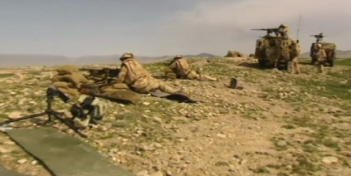
The Shangri-La where you could go to have a relaxed time, smoke some drugs buy some woolly jackets. But a peaceful Afghanistan wasn’t just a hippie mirage.
In Boston, I’ve come to meet an anthropologist and historian who spent a lot of time travelling in Afghanistan in the 1970s, Professor Tom Barfield.
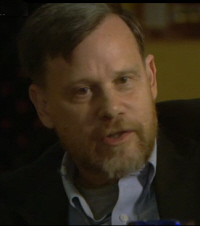
Tom Barfield “You had this perfectly peaceful Afghanistan where I, as a foreigner, could travel unarmed all over the country and there was never any trouble. And I never saw anybody armed. Now, people look back on it as a golden age. It was a time of peace and security that people went about their business. From 1929 to 1978, Afghanistan had 50 years of peace, most European countries can’t make that statement in the mid-20th-century. Afghanistan was absolutely at peace.”
“God expressed his love for all the children of mankind. May the life of these children of Afghanistan be a happy life.”
But while it was a peaceful place, it was not a unified one. Because, outside the cities, like Istalif, Afghanistan was, and remains, in many ways, a country of 20,000 diverse, isolated villages, where every village chief is almost a king. That was the case when the British invaded in the 19th century. It was still pretty much the case when the hippies came in the 1960s and 70s. And it was definitely what I found when I walked across Afghanistan at the end of 2001. These self-contained communities posed little danger to the outside world. But by the 1960s, foreign governments were beginning to take a very threatening interest in Afghanistan.
Because, once again, they were perceiving it as a key strategic point for empires. A centre point in the Cold War dividing the new superpowers, the Soviet Union from the Allies of the United States. Afghanistan was surrounded.
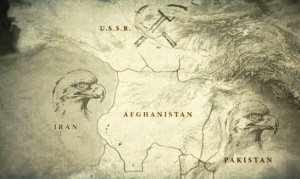
To the north, the Soviet Union, East and West, the US allies Iran and Pakistan. And while the Americans feared a Soviet push south in search of a warm water port and oil reserves, the Soviets assumed that America was going to inspire instability on their southern border. And so, both powers tried to bring Afghanistan under their influence, sending in billions of roubles and dollars of economic support.
In the snowy countryside outside of Moscow, I’ve come to meet a man who spent much of his career in Afghanistan, helping to coordinate economic development in the country in the 1960s, Soviet economic adviser, Valeri Ivanov.
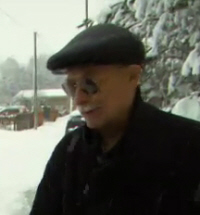
Valeri Ivanov “In 1966 when we arrived in Kabul, many tens of thousands of people were already working on projects as part of Soviet-Afghan cooperation. And the first project that basically was implemented, was the Kabul bread factory. When the specialists came there, there was just land covered in stone. Water had to be brought in for irrigation and only then could anything be done. In the end to state farms were built on this land. This was a colossal business. For each project we provided state loans to Afghanistan. Loans under exceedingly favourable terms. At just 2% per annum.”
With projects like this, Afghanistan became the fourth largest recipient of Soviet aid anywhere in the world. But, at the same time in the south of the country, the United States was also constructing dams and housing. Two superpowers jockeying for influence in a far smaller country. As indeed they were doing again and again across the world, because the Cold War stretched from Berlin to Korea, Latin America Indochina.
Communism denies religion and debases the individual to a part of the vast machine that powers the state. Children are taken early and moulded to fit the machine. Here is no search for truth.
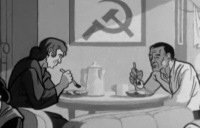
As communism and capitalism clashed foreign aid flowing into Afghanistan paid for places like this – Kabul University. Here many of the bright young minds of Afghanistan, hungry for new ideas, were excited by the opportunity to bring rapid change to their country. Some focused on communism, others immersed themselves in political Islam, an ideology rejecting both the Soviet Union and United States. The University became a hotbed of Afghan radicalism.
In the 1970s, the peaceful gardens and foreign-funded buildings at Kabul University had been taken over by radicals. Maoist and Leninist students marching in the streets. And over there, professors funded by Egyptian Muslims training on Kalashnikovs. Islamist’s and communists in a race to see who could kick over the traces of the old Afghanistan and create their new Paradise. And it was communists who got there first infiltrating the Army and, in April 1978, taking control of the country.
Communism was a foreign idea, but it was Afghans themselves and not foreigners who implemented it.
The peaceful hippie trail has become a war-torn region filled with meddling foreign officials and military men.
External Links
Istalif – Wikipedia Page
